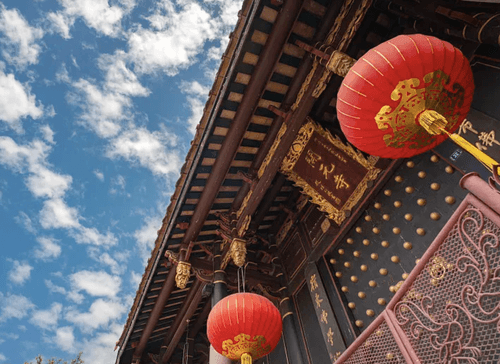
A Timeless Journey to Kaiyuan Temple (A Special Recommendation for Tourist)
(A Special Recommendation for TourPal Readers)
Hello, fellow explorers! I’m your TourPal guide, and if you’re planning a deep dive into Southern China—a journey off the well-trodden tourist path—then Chaozhou is your perfect destination. This ancient city isn't just famous for its exquisite Gongfu Tea and savory beef hotpot; it's also home to one of the most historically rich and culturally significant sites in the region: the Kaiyuan Zhenguo Chan Temple, affectionately known simply as Kaiyuan Temple.
Many international visitors often ask: "Is the Kaiyuan Temple in Chaozhou famous? What exactly makes it special?" Let me tell you: Kaiyuan Temple is far more than just a place of worship. It’s one of the oldest and best-preserved ancient architectural complexes in Eastern Guangdong (Yuedong), a living museum of Chaoshan culture and Buddhist art. It is absolutely worth a special trip.
I. History (The Long Story): A 1,280-Year-Old Covenant
As you stand in the courtyard of Kaiyuan Temple and look up, know that you are standing in a place that dates back to the eighth century AD.
Kaiyuan Temple was originally founded in the 26th year of the Kaiyuan reign during the Tang Dynasty (AD 738). Yes, this temple has stood silently for over 1,280 years! The name "Kaiyuan" is taken directly from the era name of the time. During the Tang Dynasty, the Emperor ordered the construction of Kaiyuan Temples across the country as official state monasteries, and the one in Chaozhou is among the few that have survived to this day and retained its unique local character.
In the Song Dynasty, it was renamed "Kaiyuan Wanshou Chan Temple"; in the Yuan Dynasty, it became "Kaiyuan Zhenguo Chan Temple." From these evolving names, you can feel the consistently important role it has played in Chinese history—a true "Millennium Ancient Monastery" of the Eastern Guangdong region.
The reason it has survived dynastic changes, wars, and natural disasters is not only due to its sturdy architecture but also because it carries the profound faith and cultural memory of the Chaoshan people. It stands like a benevolent elder, a quiet witness to the ebb and flow of Chaozhou city life.
II. The Art (The Craft): A Storybook Written in Architecture
If you merely treat Kaiyuan Temple as a simple religious site, you will miss its most essential feature. Kaiyuan Temple is a treasure trove of art, its architecture integrating elements from the Tang, Song, Yuan, Ming, and Qing dynasties, while simultaneously exhibiting a strong indigenous Chaoshan flavor.
The Crown Jewel: Secrets of the Mahavira Hall (Daxiong Baodian)
The core of the temple is the Mahavira Hall. As you stand before the Hall, you’ll notice its incredibly grand roof. Look closely: the roof is not a simple gable, but features a rare "three-layered double-eave hip-and-gable roof" structure (Sān Céng Chóng Yán Xiē Shān Dǐng), complemented by exquisite Dougong (bracket sets), which makes it look overwhelmingly majestic and is quite uncommon even in China. This demonstrates the superb architectural wisdom of ancient craftsmen.
A Fantastical Rooftop World: The Art of Qian Ci
The most famous feature of Chaoshan architecture is the art of Inlaid Porcelain (Qian Ci). On the roof ridges and walls of Kaiyuan Temple, you will see various lifelike, three-dimensional decorations: dragons, phoenixes, flowers, birds, and figures from myths... These are not simple sculptures, but are cut and embedded from numerous pieces of colorful porcelain. These bright, vivid Qian Ci works transform the heavy, cold roof into a vibrant art gallery full of stories.
The Intricacy of Wood Carving: Gold-Lacquer Woodcarving
Step inside the Hall and you will be mesmerized by the intricate wood carvings. Chaozhou wood carving is known for its delicacy and complexity, especially the Gold-Lacquer Woodcarving. The carvings on the altars and pillars are multi-layered, with flowing lines, often coated with gold lacquer. Under the light, they shimmer, looking like patterns woven from pure gold. The content of these carvings is rich, ranging from Buddhist tales to folk legends, representing the Chaoshan people's aspirations for a beautiful life.
III. Religion & Culture (The Soul): Experiencing Peace and Heritage
Religiously, Kaiyuan Temple belongs to the Chan (Zen) school of Buddhism, but its status in the hearts of the Chaoshan people transcends simple sectarianism.
A Spiritual Anchor for the Diaspora
For millions of Chaoshan people—including the vast overseas Chinese population living across the globe—Kaiyuan Temple is the spiritual "root" (Gēn) of their identity. On the first and fifteenth day of the lunar month, or during major festivals, the temple is filled with the scent of burning incense. People come to pray for blessings, make vows, and give thanks. You will see devout followers kneeling quietly, and this serene yet solemn atmosphere will make you feel a powerful sense of cultural cohesion.
The Experience of Zen and Stillness
Foreign visitors often ask: "What should I do when I visit Kaiyuan Temple?" My advice is: slow down and feel it with your heart. Don't treat it as a quick photo op, but as a place where you can sit quietly and contemplate. Listen to the faint chanting echoing through the halls, smell the subtle fragrance of sandalwood in the air, and you might find a long-lost sense of peace. This is one of the best places to experience the unique Buddhist culture of Southern China.
IV. Sightseeing & Practical Tips (Must-See & FAQs): Your Pilgrimage
When visiting Kaiyuan Temple, there are a few must-see spots and practical travel suggestions:
Must-See Highlights
Hall of Heavenly Kings (Tianwang Dian): The entrance to the temple, housing the Maitreya Buddha (the Laughing Buddha) and the Four Heavenly Kings. The Maitreya Buddha's smiling face seems to welcome every guest from afar.
Song Dynasty Stone Sutra Pillars (Shí Jīng Chuáng): In front of the Mahavira Hall, there is a pair of stone pillars dating back to the Song Dynasty, covered in carved Buddhist scriptures. They are proof of the temple's antiquity and precious cultural relics.
The Giant Iron Bell: The temple holds a massive iron bell cast during the Ming Dynasty. Its shape is ancient and rustic—a true testament to history. Ringing the bell, once a time-keeping method, now carries the meaning of blessing and good fortune.
Ancient Banyan Trees: Several centuries-old banyan trees with dense foliage shade the courtyard, adding life and coolness to the ancient monastery. They stand like silent guardians of the temple.
Practical Tips and FAQs
Where exactly is Kaiyuan Temple located?
The temple is conveniently located right in the center of Chaozhou city, within the heart of the ancient city wall area, and is immediately adjacent to the famous Paifang Street (Archway Street). You can easily make it the first stop of your Chaozhou Old Town tour before exploring the surrounding ancient streets.
What is the best time to visit?
The best time is early morning. There are fewer crowds, the light is soft, and you can quietly listen to the morning chanting (Zaoke), feeling the stillness as the temple wakes up. Alternatively, late afternoon (around 4-5 PM) is also a good option, avoiding the midday heat.
What about the entrance fee?
Kaiyuan Temple has maintained an admirable tradition for centuries: free admission. This embodies the Buddhist spirit of "opening the door of convenience" (Guǎng Kāi Fāng Biàn Zhī Mén), allowing everyone to connect with the culture and faith.
Dress Code:
Please dress respectfully (TIP: while the temple is friendly, it is best to avoid overly revealing clothing such as short shorts or tank tops) to show reverence.
Why is the local community so dedicated to preserving Kaiyuan Temple? (Integrating the News/Keywords: Cultural Heritage, Preservation)
In recent years, both Chaozhou and the national government have placed significant emphasis on the protection and restoration of Kaiyuan Temple. This temple is more than just wood and brick; it carries the traditional culture and historical memory of the Chinese nation. Every careful restoration—such as protecting the tiles on the Mahavira Hall roof and moisture-proofing the precious wood carvings—is done to ensure this invaluable heritage is passed on intact to the next generation. It represents the sincere devotion and enduring commitment of the Chaoshan people to their traditions.
Conclusion: A Conversation Across Time
Kaiyuan Temple, this ancient yet vibrant monastery in Eastern Guangdong, quietly awaits every traveler who comes from afar. It may not be as grand or massive as some of China's most famous temples, but every tile, every piece of wood carving is filled with the unique aesthetics and the sincere faith of the Chaoshan people.
When you leave, you will not only take away a few photographs but also a sense of tranquility dating back to the Tang and Song Dynasties, and an understanding of the "meticulous craftsmanship" spirit that defines Chaoshan culture.
Come to Chaozhou, step into Kaiyuan Temple, slow down your pace, and begin a conversation with 1,280 years of history!


